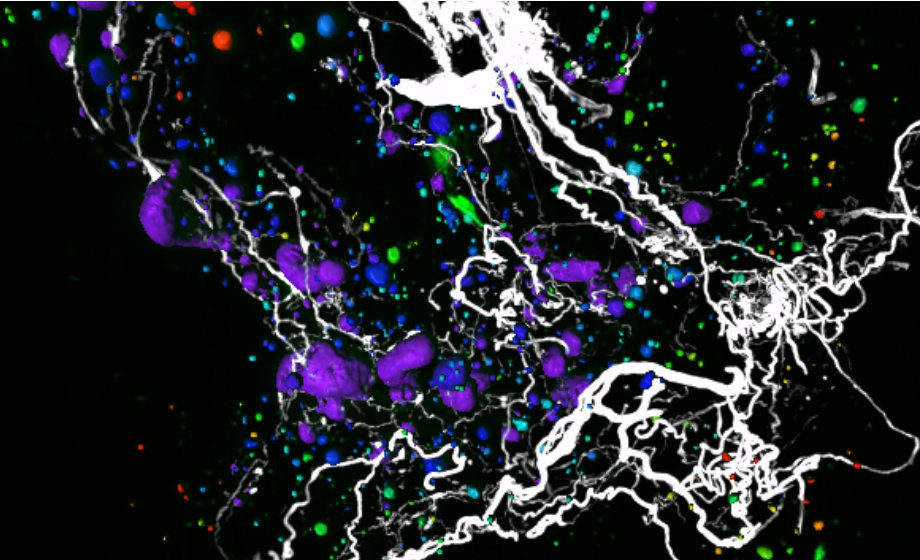Q&A Report: Remodeling of Pancreatic Innervation in Diabetes

Have you used immunohistochemical staining to image and quantify somatostatin in the pancreas?
A. Alvarsson: We have successfully stained for somatostatin using SC7819 (Santa Cruz) at a concentration of 1:1000 using the modified iDISCO+ protocol described in Alvarsson et al., 2020. However, we have not quantified this data.
Alvarsson et al., 2020
Could a low-carb/ketogenic diet promote pancreatic innervation or regeneration, whether in pre-diabetes or diabetes status?
S. Stanley: This is an interesting question. We are not aware of any studies examining the effects of low-carb/ketogenic diets on pancreatic innervation. Long term KD has been reported to reduce beta and alpha cell mass resulting in glucose intolerance in mice (Ellenbroek et al) but to improve glycemia in other studies (Her et al) and in Akita mice (Fujita et al). However, there is evidence that KD alters autonomic nervous system activity, for example, by up-regulating sympathetic activity in brown adipose tissue (Douris et al). It would be interesting to see if the changes in activity are associated with structural alterations in autonomic innervation.
Ellenbroek et al., 2014
Her et al., 2020
Fujita et al., 2020
Douris et al., 2017
Can pancreatic innervation be related to islet cell transdifferentiation, i.e. beta to alpha under severe stress?
S. Stanley: There is some evidence that neural signals regulate beta cell replication and possibly transdifferentiation to generate beta cells. Medina et al showed that blocking parasympathetic signaling using atropine inhibited beta cell proliferation in islets and differentiation of ductal cells to insulin+ cells in a pancreatic duct ligation model. Further studies have shown that muscarinic agonists potentiate and adrenergic stimulation blunt the effects of glucose on beta cell proliferation (Moullé et al., 2019). There has been less work on the role of innervation in islet cell transdifferentiation but a recent paper by Cinti et al. reports increased sympathetic innervation in the islets of diabetic individuals and correlation with beta cell dedifferentiation.
What role do pancreatic neural circuits play in hypoglycemia unawareness?
A. Alvarsson: Loss of sympathetic islet innervation has been implicated in the impaired glucagon response to insulin-induced hypoglycemia in type 1 diabetes. For more details see the work of Taborsky GJ and colleagues (e.g. Mundinger and Taborsky, 2016). Moreover, islet transplants are able to restore both glucose counterregulation and hypoglycemia awareness in patients with long-standing type 1 diabetes (Rickels, 2019). Islet transplantation studies in rats with streptozotocin-induced diabetes have shown that islets transplanted into the liver are reinnervated by sympathetic innervation that reduce insulin secretion upon stimulation (Gardemann et al., 1994; 1995).
Mundinger and Taborsky, 2016
Rickels, 2019
Gardemann et al., 1994
Gardemann et al., 1995